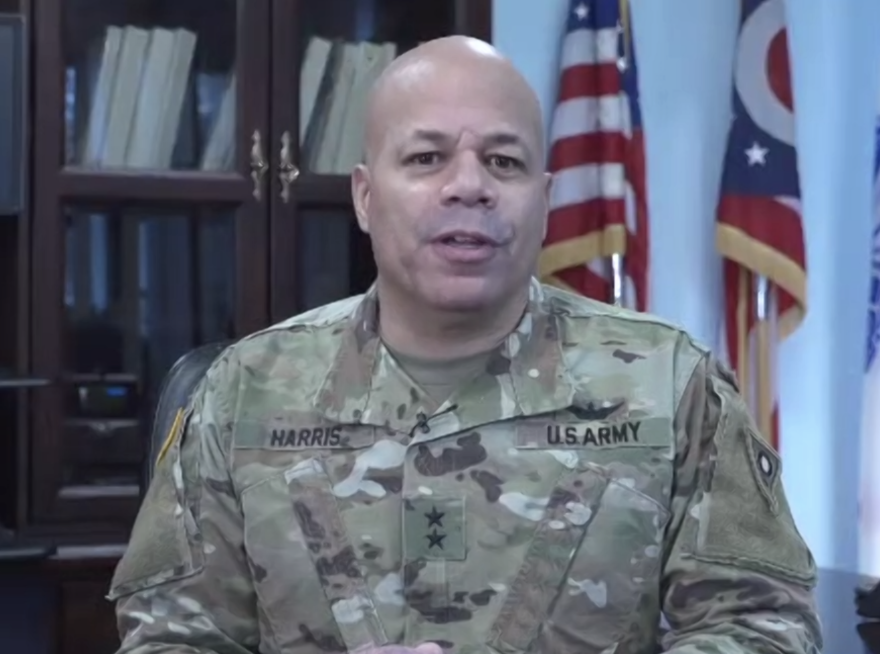The Ohio Department of Health reports there’s some indication the COVID virus, which has overwhelmed Cleveland hospitals in recent weeks, is moving south in Ohio.
State Health Director Dr. Bruce Vanderhoff said hospitalizations have fallen as much as 24% in Cleveland this week, but he also said other parts of the state are experiencing an increase in COVID hospitalizations.
“The Southwest region of Ohio reported a 14% increase and the western Ohio region a 13% increase in ICU admissions for patients with COVID-19 compared with last week,” said Vanderhoff.
It's omicron, not the delta variant, that is driving the surge
Vanderhoff said this surge has been driven by the omicron variant of the virus. While it is highly contagious and far easier to spread, he said it has proven to be milder in vaccinated people. He said more than 90% of those Ohioans who have been hospitalized have been unvaccinated.
Vanderhoff explained it's important for all Ohioans to stay home if they have cold symptoms because it could be COVID. While it may be mild for vaccinated Ohioans, it could be dangerous for unvaccinated Ohioans or those who are immunocompromised.
Almost 60% of Ohioans 5 years old and older who are eligible for COVID vaccines are fully vaccinated at this point.
Resources are being shifted because of the surge

For weeks now, Ohio National Guard members, along with federal Air Force professionals, have been working at the Cleveland Clinic. The hospital has been hard hit by the Omicron surge during the holidays and the weeks following. Vanderhoff said federally deployed military professionals will continue to help in Cleveland and adds the feds will be sending some additional help to the Summa system in Akron in the coming days.
Because the surge is moving south, Adjutant General Major Gen. John Harris Jr. said the Ohio Natl Guard will shift to Southern and Southwest Ohio to deal with the increasing hospitalizations there.
Dr. Roberto Colon with the Miami Valley Hospital in Dayton said his facility is feeling the stress of the surge right now. He said the hospital has taken steps to increase capacity by putting off elective surgery and making other changes. He said the health care workers there are very happy to have the Ohio Natioanl Guard members there and their work has been very much appreciated by staff.
It's still tough to find rapid at-home tests
Vanderhoff said the state has received a fraction of the 1.2 million at-home tests it ordered for January, but the state expects to get 400,000 in the near future. Those will be given to K-12 schools and colleges. When they have enough, Vanderhoff said the tests will, once again, be supplied to libraries and health departments statewide that can hand them out free of charge to Ohioans. Libraries had been doing that from March 2021 until just a couple of weeks ago when the state shifted the priority for those tests to schools.
The rapid tests have been in short supply nationally in recent weeks. The Biden administration announced each household in the country can order four free COVID tests at Those tests will be mailed through the U.S. Postal Service in the coming days.
In addition, people with private insurance can be reimbursed up to $12 a test from their private insurer if they purchase the tests at a pharmacy. Vanderhoff said Ohioans can also go to one of the mass testing sites throughout the state to have a test administered. A complete list of those locations can be found
When will this surge end?
Vanderhoff said there are encouraging signs right now but notes there are still a lot of people in hospitals with COVID. He points out Ohio continues to record an average of more than 20,000 positive case numbers daily, a number he describes as very high. He also explains there are other variants out there that could pose problems in the future.
Vanderhoff went on to say that vaccination continues to be the safest way to combat the virus. Even though the vaccines might not be enough to keep people from getting COVID, Vanderhoff explains they are doing a good job of keeping vaccinated people from getting seriously ill with the virus.
As far as case numbers, those have been off in recent days. The Ohio Department of Health reported a backlog in cases that have been added to the state's dashboard in recent days. Vanderhoff said the department has made changes to correct the problem.
Copyright 2022 The Statehouse News Bureau. To see more, visit .




